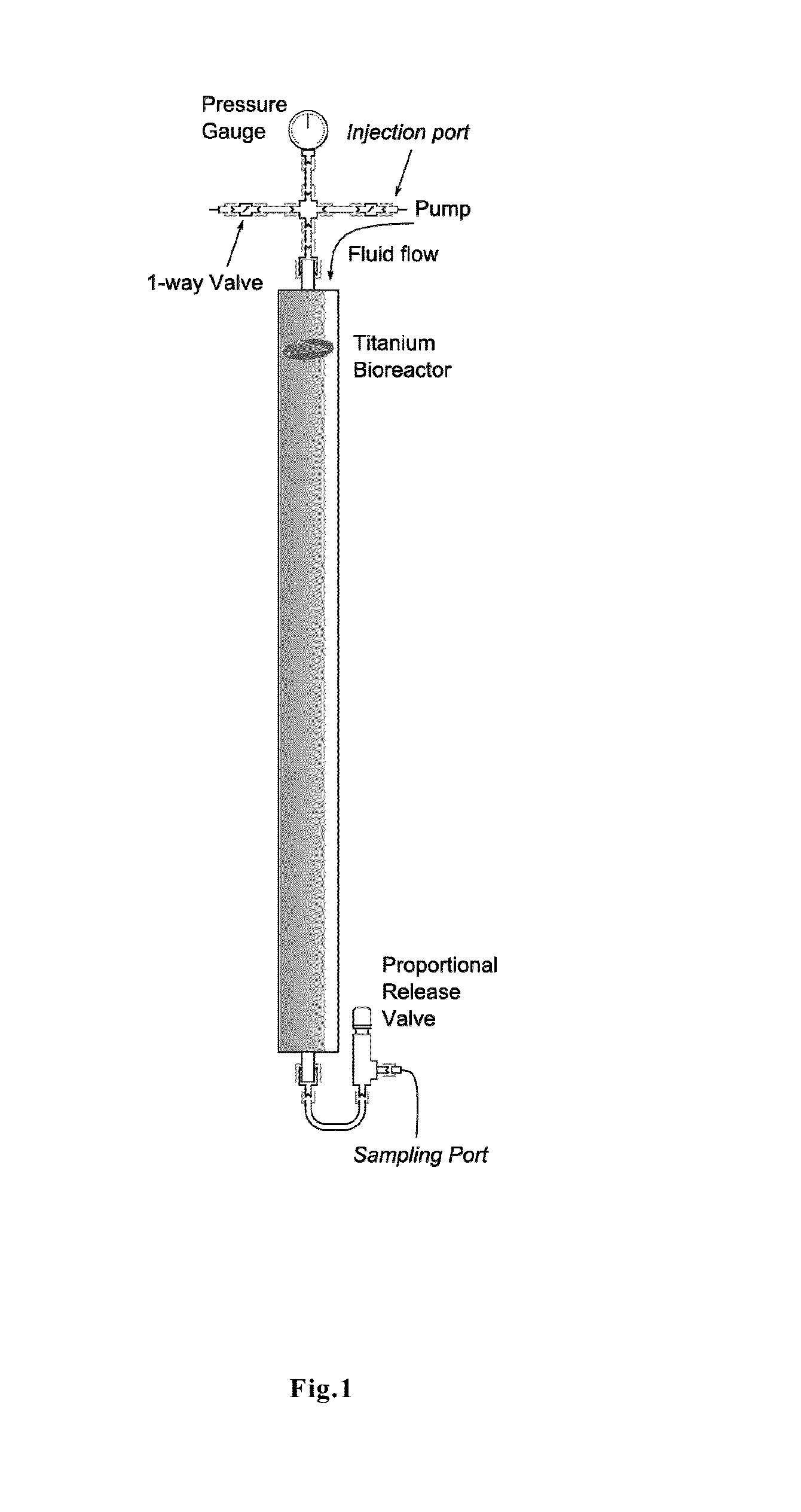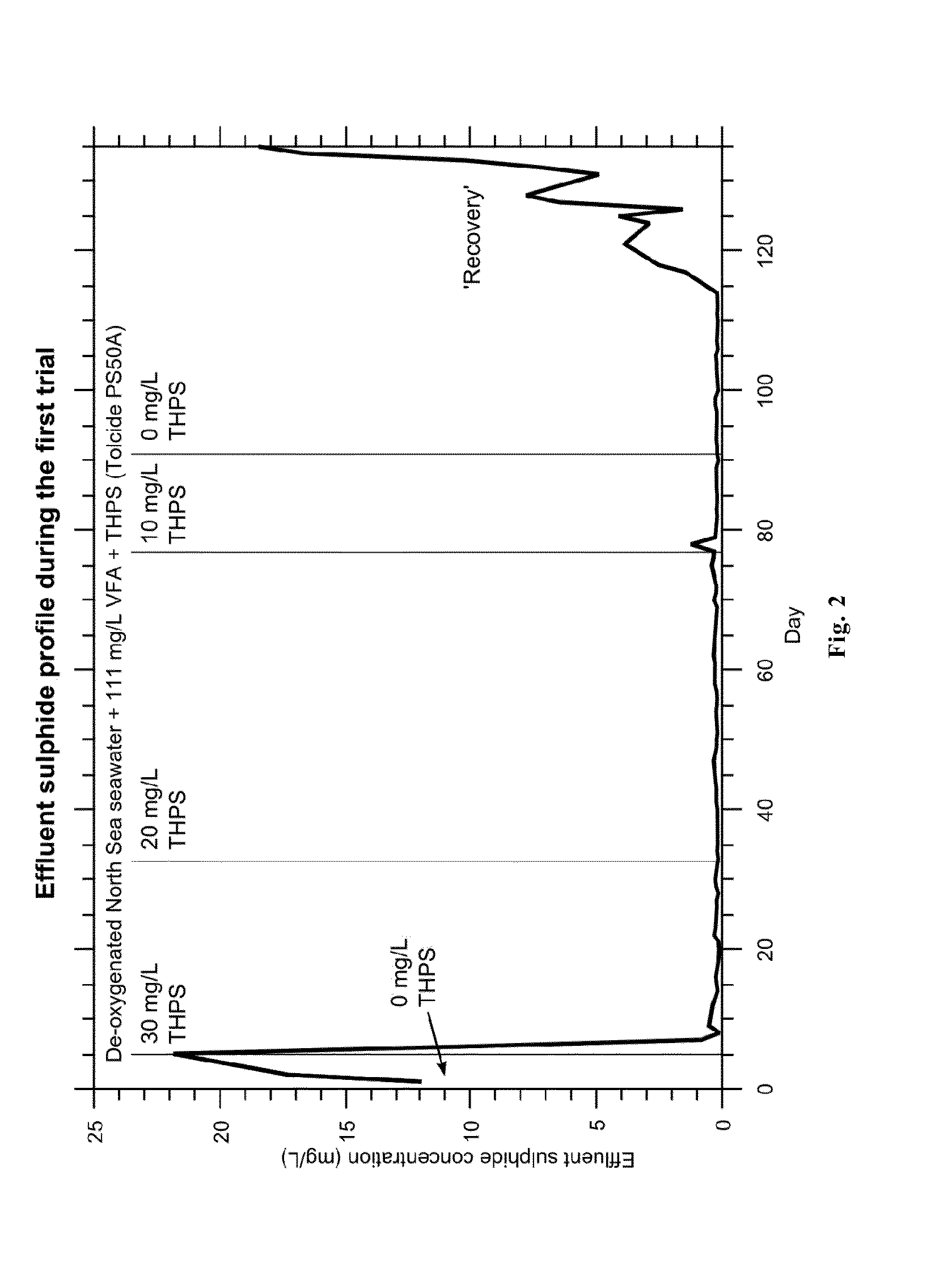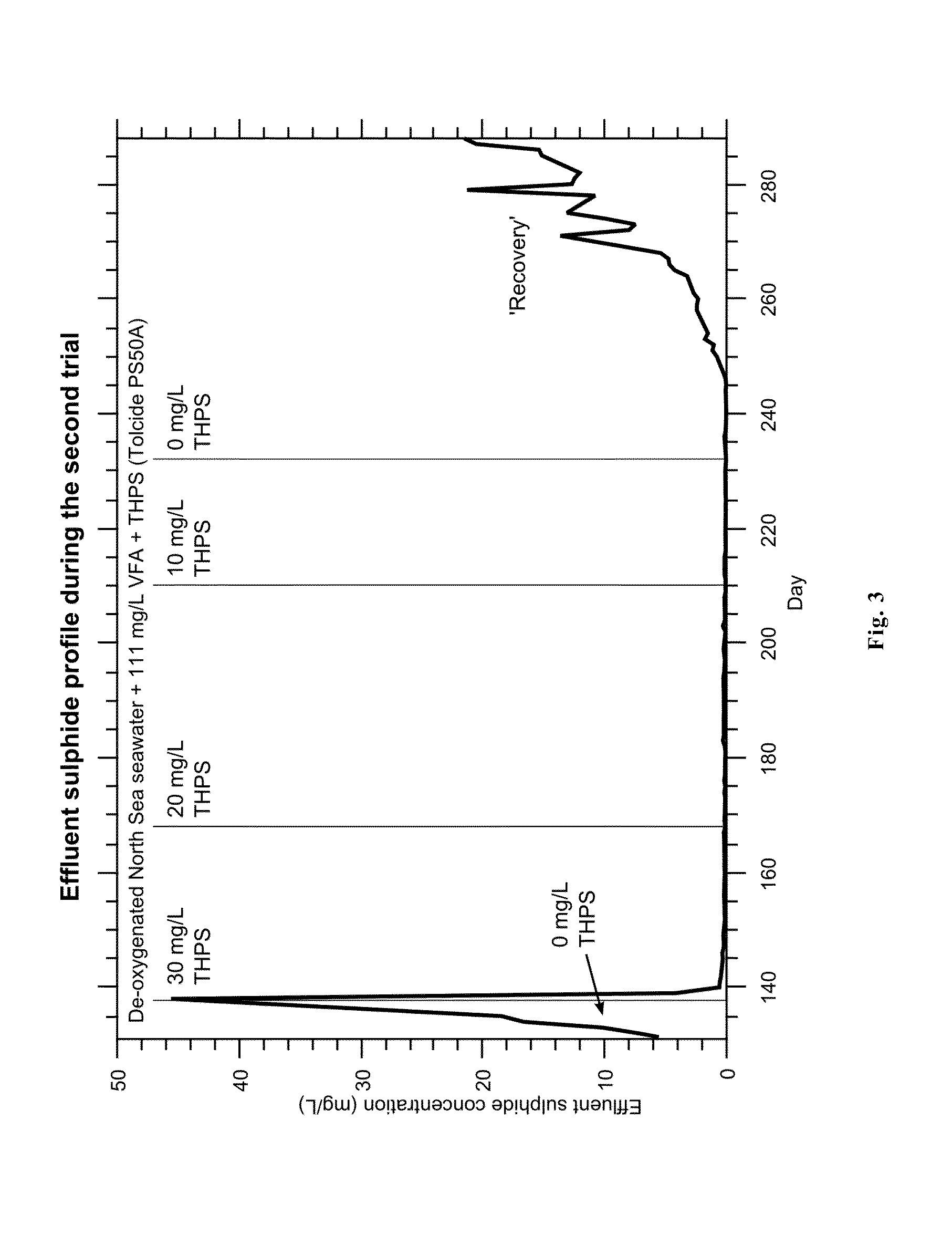Treatment method for a hydrocarbon-containing system using a biocide
- Summary
- Abstract
- Description
- Claims
- Application Information
AI Technical Summary
Benefits of technology
Problems solved by technology
Method used
Image
Examples
examples
[0166]1.1 Bioreactor Construction
[0167]The bioreactor used was constructed from titanium; this construction eliminated the risk of any production of iron sulphides through corrosion, which in turn would react with injected THPS. The column was 75 cm in length, and had an internal diameter of 5.22 cm. The column was packed with low-iron sand (Fisher, UK) with a glass fibre plug at the base to prevent the draining of sand during filling. The column fittings (injection and production pipework) were constructed from 316 stainless steel (Swagelok).
[0168]A schematic diagram of the bioreactor is given in FIG. 1.
[0169]1.2 Operation (Injection Fluids, Cycle)
[0170]The column was maintained at 1000 psig (70 barg) and 24° C.±1° C. The pressure was held between the pump head and the proportional release valve. The use of 1-way valves in the injection head permitted disconnection and maintenance of the pump without depressurisation of the column.
[0171]The pump used was a high-pressure liquid chro...
PUM
| Property | Measurement | Unit |
|---|---|---|
| Fraction | aaaaa | aaaaa |
| Fraction | aaaaa | aaaaa |
| Time | aaaaa | aaaaa |
Abstract
Description
Claims
Application Information
 Login to View More
Login to View More - R&D
- Intellectual Property
- Life Sciences
- Materials
- Tech Scout
- Unparalleled Data Quality
- Higher Quality Content
- 60% Fewer Hallucinations
Browse by: Latest US Patents, China's latest patents, Technical Efficacy Thesaurus, Application Domain, Technology Topic, Popular Technical Reports.
© 2025 PatSnap. All rights reserved.Legal|Privacy policy|Modern Slavery Act Transparency Statement|Sitemap|About US| Contact US: help@patsnap.com



